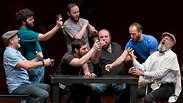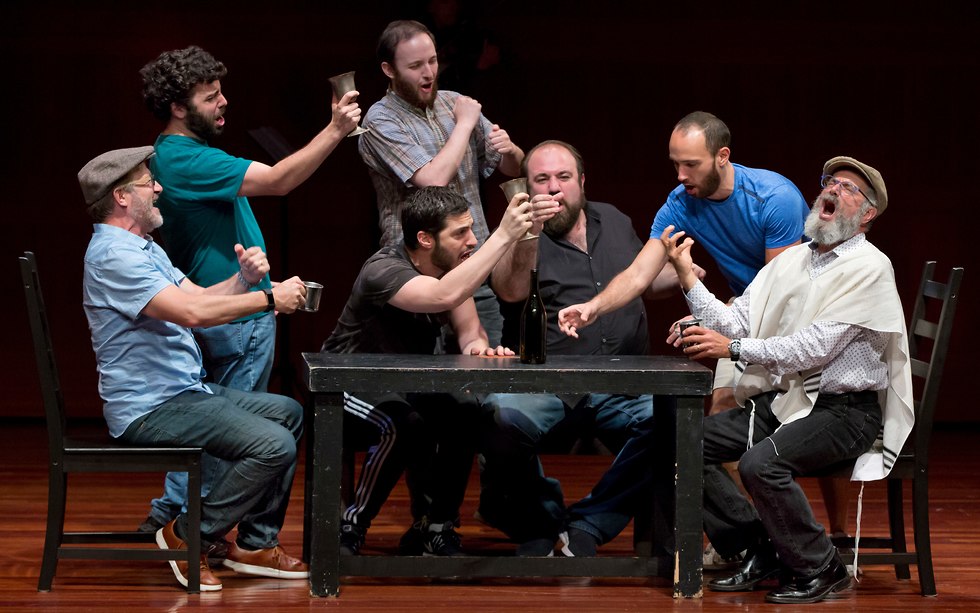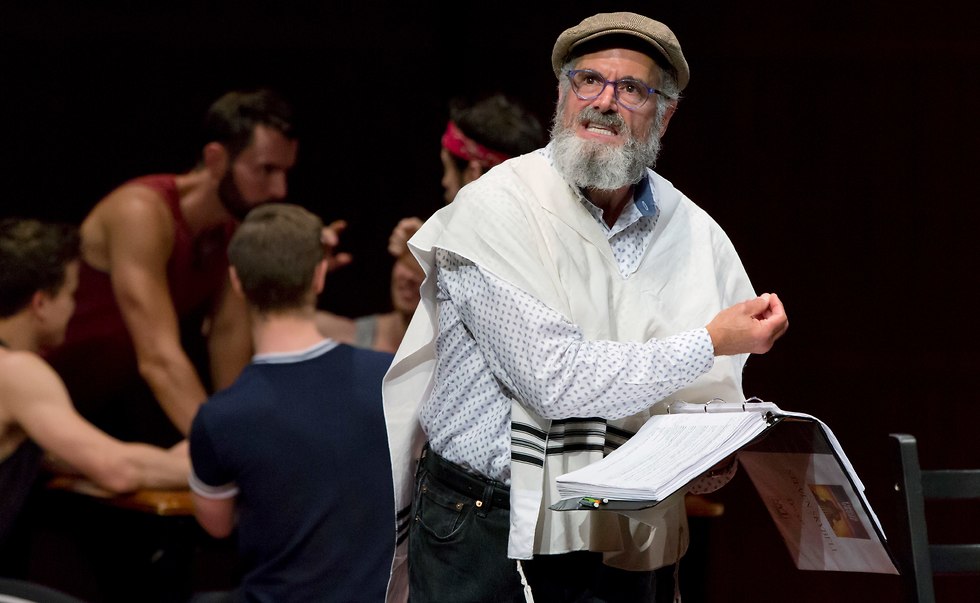
NEW YORK - It might seem meshuganah—crazy—to stage a beloved musical in a language that most of the audience won't understand. But Tevye the dairyman and his family will speak Yiddish in an off-Broadway production of "Fiddler on the Roof" directed by Oscar and Tony winner Joel Grey.
Previews started Wednesday for the show, which will be the first-ever US production of "Fiddler" in the language its characters would have spoken.
"I always knew what this play was about and that's how I had the chutzpah to tackle it," Grey said during a rehearsal at the National Yiddish Theatre Folksbiene, which is housed at the Museum of Jewish Heritage in lower Manhattan. "We work in English first on the scenes so that everybody understands the characters, and the third or fourth time we do it in Yiddish, and we just keep at it."

"Fiddler on the Roof" opened on Broadway in 1964 starring Zero Mostel as Tevye and ran for eight years. It has been a favorite of schools and community theater groups ever since and has been revived on Broadway four times. Its songs including "Sunrise, Sunset" and "If I Were a Rich Man" are familiar even to people who've never seen the show.
Based on stories by Sholom Aleichem originally written in Yiddish, "Fiddler" is set in 1905 in a Jewish village in czarist Russia.
A Yiddish version of "Fiddler" translated by actor and writer Shraga Friedman as "Fidler afn Dakh" was performed in Israel in 1966 but was never staged in the United States until now.

In the Yiddish version of the show, the song "To Life!" doesn't have to be translated from "L'Chaim!"—It's just 'L'Chaim!" ''If I Were a Rich Man" becomes "Ven ikh bin a Rotschild," from a story by Aleichem about a man who imagines he were as wealthy as a member of the Rothschild family.
The new production shows how decades of work to preserve Yiddish by organizations including the Folksbiene—Yiddish for World Stage—have paid off.
"For more than a generation, we've had an explosion of contemporary Yiddish arts and culture by musicians, poets, theater makers, scholars and writers who have studied the language and its history and its incredible volume of modern literature and eclectic music," said Alisa Solomon, the author of "Wonder of Wonders: A Cultural History of Fiddler on the Roof," published in 2013.

Solomon said "Fiddler" is "free to just kind of be itself in a way that 50 years ago it couldn't be in some circles because there was an absence of that vibrant Yiddish culture."
Yiddish, which is based on German with elements taken from Hebrew and other languages and is written with the Hebrew alphabet, was once spoken by millions of Eastern European Jews but fell victim both to the Holocaust and the pull of assimilation. Isaac Bashevis Singer, who won a Nobel Prize for his stories written in Yiddish, famously said the language "has been dying for a thousand years, and I'm sure it will go on dying for another thousand."

Immigrants to the United States built a thriving Yiddish theater scene that launched the careers of famed acting teacher Stella Adler and stars such as Edward G. Robinson. The Folksbiene was founded in 1915 and was once one of more than a dozen Yiddish theater companies on Manhattan's Lower East Side. It presents plays from the Yiddish theater canon as well as new work and adaptations of Yiddish literary works such as "Yentl," based on Singer's story "Yentl the Yeshiva Boy."
Grey's father, Mickey Katz, was a musician and actor who performed Yiddish comedy songs, but Grey said he doesn't speak much Yiddish himself and has been learning while rehearsing.
Grey watched as the actors rehearsed the tavern scene from "Fiddler" in which Tevye agrees to let the butcher Lazar Wolf marry his eldest daughter. To a non-Yiddish speaker, the most easily understood words were schnapps and vodka.
The 86 year old is best known for his role as the master of ceremonies in "Cabaret," a musical that improbably turned the rise of Hitler into popular entertainment.
"He brings a whole other dimension in terms of his theatrical knowledge and sense," said Zalmen Mlotek, the Folksbiene's artistic director. "It's an experience."
















